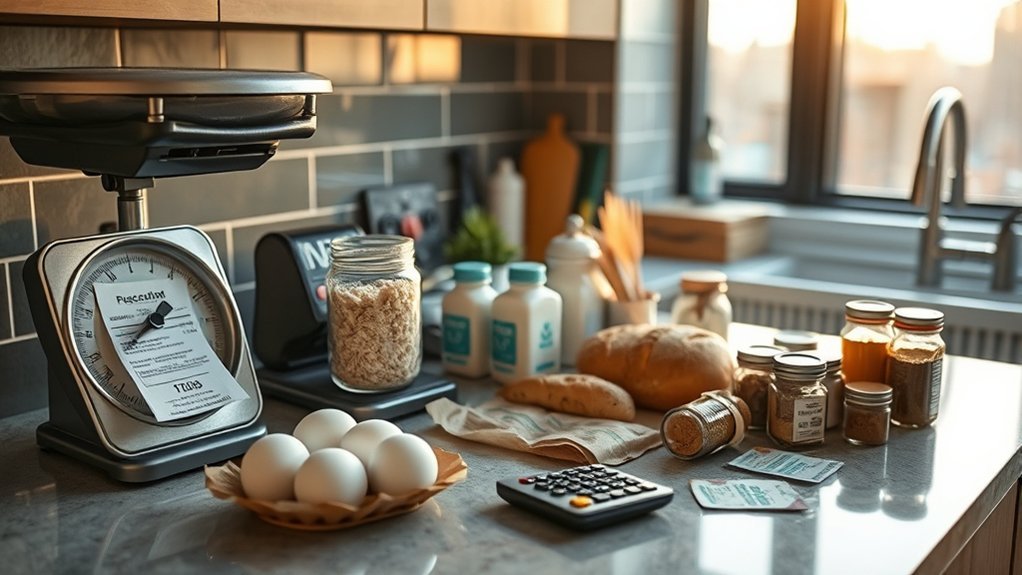About 35–46% — that’s how much living in Arlington typically costs more than the U.S. average, driven mainly by housing. You’ll want a clear monthly budget because one-bedroom rents, groceries, utilities and transport all run above national norms. I’ll walk you through typical rent and mortgage figures, monthly essentials, and realistic household budgets so you can see where your money will go and where to cut costs.
Cost of Living Snapshot for Arlington, VA

Usually, you’ll find Arlington’s cost of living sits about 35–46% above the U.S. average, driven mainly by very high housing costs.
You’ll want clear numbers: Arlington cost of living indices run roughly 136–146, and housing pushes that up. Expect the average rent in Arlington for a one‑bedroom around $2,300–$2,690, about 40–50% above national figures.
If you’re buying, the average home price often tops $1,000,000, so mortgage and housing payments dominate your budget.
Monthly utilities aren’t the shock—energy averages $187–$216 and phone $188–$195, leaving overall utilities near the U.S. average.
For a single adult aiming to keep options and autonomy, the typical recommended pre-tax salary to live comfortably is about $80,000–$87,200 per year.
Building a home in a nearby area like Dallas can also significantly affect your overall budget due to construction costs. Use these metrics to set firm budget targets, prioritize housing decisions, and pursue income moves that expand your freedom rather than constrain it.
How Much Rent Costs: Average Apartment and Trends

You’ll find average rents in Arlington run about $2,358–$2,507 per month, with one-bedrooms typically $2,300–$2,500 and studios around $2,000–$2,100.
That’s roughly 40–50% higher than the U.S. average one‑bedroom (~$1,629), so apartment costs are a major driver of local living expenses.
Recent quarterly data also show average unit size near 862 sq ft and larger units (3‑beds) commanding $3,540–$4,350, signaling a trend toward higher prices for bigger layouts. Additionally, higher rental costs can often lead to increased long-term savings associated with amenities and services in the area.
Average Rent Levels
Because Arlington sits close to D.C. and has strong transit access, expect rents well above the national average: typical one‑bedroom units run about $2,358–$2,507 per month (vs. a U.S. 1BR average around $1,629), two‑beds commonly hit $3,200–$3,700, and three‑beds often fall between $3,540–$4,350, with prices spiking near Metro stations and in neighborhoods like Clarendon and Courthouse.
You’ll find the average rent reflects durable demand and limited supply, so plan for 1BR rent toward the top of that band.
A realistic housing cost budget often reaches about $4,371/month when you include utilities, fees, and transit.
CoStar’s quarterly trend updates show Arlington rents remain elevated, especially for transit‑proximate units.
Rent vs. National
Having seen how local rents stack up within Arlington, let’s compare them to national and regional benchmarks so you can judge how much more you’ll pay.
You’ll find the average rent in Arlington — about $2,358–$2,507 for a typical unit (one-bedrooms around $2,300–$2,500) — runs roughly 44–45% above the national average. That gap reflects tight inventory, proximity to Washington, D.C., and strong demand, which also pushes two- and three-bedroom housing costs much higher.
Arlington rent remains slightly below D.C. (D.C. ~10.7% higher) but stays among the priciest U.S. markets.
For lower monthly rent, consider shared housing or nearby suburbs; those choices cut housing costs while keeping access to the region.
Apartment Size Trends
Frequently, apartment size and layout are as important as per‑unit rent when you’re budgeting in Arlington.
You’ll see average 1‑bedroom rent around $2,358–$2,475 monthly (city center ~$2,475; outside center ~$1,850), so you pay a premium for location.
The typical apartment size (sq ft) citywide is about 862 sq ft, but central neighborhoods often offer smaller units at higher per‑sq‑ft rates.
If you need space, 2‑3 bedroom rents climb sharply: expect $3,200–$3,700 for 2BRs and $3,540–$4,350 for 3BRs depending on Metro proximity.
Don’t forget renter housing costs overall — some breakdowns show ~$4,371/month including utilities — meaning total housing burden can far exceed base rent and shape your freedom to move or save.
Buying a Home: Prices, Mortgage Rates, and Monthly Payments

If you’re shopping for a home in Arlington, expect prices well above national averages — listings commonly cluster around $826k–$1.13M with an often-cited mean near $1.09M — which translates into monthly costs that can run several thousand dollars even before taxes and insurance.
With a home price in Arlington near $1.09M and current mortgage rates around 6.90%, principal-and-interest alone on that loan can be roughly $6,900–$7,300 monthly depending on term and down payment.
On a roughly $1.09M Arlington home at ~6.9% rates, principal and interest alone can run about $6,900–$7,300 monthly.
Reported typical mortgage payments in the area also show buyers paying roughly $5,300–$5,400 per month when lower-priced purchases or larger down payments apply.
You’ll need to add property tax, homeowner’s insurance and possible HOA dues: at roughly $1.033 per $100 assessed value, taxes on a $1M property approach $10,330 yearly.
Budget conservatively — monthly housing costs often run well above mortgage-only figures, and planning ahead preserves your financial freedom.
Monthly Utilities and Telecom Expenses

You should expect basic utilities for a ~900 sq ft Arlington unit to run about $203–$216 per month, with energy specifically around $189.50–$216.36.
Phone and mobile bills are comparatively high (roughly $187.77–$194.06/month) and internet adds about $71–$75, so combined communications can be $70–$190 extra depending on plans.
For budgeting, plan roughly $250–$300/month for basic utilities plus the separate $70–$190 for phone and internet. Implementing a repair budget can help manage unexpected expenses effectively.
Typical Monthly Utility Costs
When you budget for living in Arlington, plan on monthly utilities and telecoms totaling roughly $190–$220 for basic energy plus another $60–$190 for internet and phone, with phone service alone often running about $188–$194 a month.
You’ll find utilities in Arlington hover near the national average, so the average monthly energy bill sits around $189.50–$216.36 per month.
For a modest 900 sq ft apartment, basic utilities commonly run $200–$216, while combined utilities (energy, water, internet, phone) vary widely — roughly $385 for renters up to $863 for homeowners.
Treat these as recurring costs you control through efficiency, plan choices, and mindful use.
Track per month expenses to stay financially free and intentional.
Phone and Internet Bills
Now that you’ve accounted for energy and other basic utilities, look next at phone and internet costs, which commonly add another $250–$270 per month for a typical Arlington household. You’ll see phone plans average about $187–$194 (some sources list $181–$188), while internet runs roughly $71–$75. Treat telecommunications as recurring utilities when you budget.
| Category | Typical Range | Note |
|---|---|---|
| Phone | $181–$194 | Near national average |
| Internet | $71–$75 | Often bundled with TV |
| Telecoms total | $250–$270 | Phone + internet |
| Energy + telecoms | $450–$490 | Plan for combined monthly bills |
Use these numbers to reclaim financial control and design a liberated monthly budget.
Grocery and Food Price Breakdown

With groceries running about 12% above the U.S. average, expect to pay roughly $4.61 for a gallon of milk, $4.30 for a loaf of bread, and $3.79 for a dozen eggs—basic staples that set the baseline for your weekly shop.
You’ll see meat like steak near $15.51 per pound and ground beef about $7.11, while cheese averages $4.75. Produce varies: potatoes $5.03, lettuce $2.09, bananas $0.81 per pound.
Pantry and beverage items push totals higher — coffee around $6.80, orange juice $4.59, sugar $5.38, cooking oil about $10.24. Use this grocery price breakdown to plan realistic meals and cut waste; buying seasonal produce, bulk staples, and cheaper cuts of meat lowers per-meal costs. Regular inspections of your air conditioning system can help avoid unexpected repair costs related to air conditioning function.
For budgeting, note a renter’s monthly grocery subtotal averages $732, versus $1,451 for homeowners — a reminder that household size and shopping habits directly shape your Arlington cost of living and overall food prices.
Healthcare and Personal Care Costs

Expect routine doctor visits in Arlington to run about $158–$185, dental checkups $130–$153, and eye exams $144–$165 — all noticeably above national averages.
You’ll want to factor in higher copays or out-of-pocket costs if your insurance mirrors local price levels, since overall healthcare services are roughly 12–19% pricier here.
Also budget for prescriptions and OTC items (ibuprofen around $11.57 locally) when estimating your monthly personal care spend. Regular maintenance on your vehicle, such as preventing exhaust leaks, can also help avoid unexpected expenses related to car repairs.
Typical Visit Costs
When you plan healthcare visits in Arlington, budget a bit more than the national averages: a typical doctor visit runs about $180–$185 (average $184.67), dental appointments commonly fall between $131.67 and $152.75, and optometrist exams are roughly $144–$165. You’ll find overall healthcare costs and personal care are 14–19% above U.S. norms, with dental care ~29% higher and eye care ~26% higher. A bottle of ibuprofen averages $11.57, and personal services tend to be ~8% pricier.
| Service | Typical price |
|---|---|
| Doctor visit | $180–$185 |
| Dental appointment | $131.67–$152.75 |
| Optometrist exam | $144–$165 |
| Ibuprofen (OTC) | $11.57 |
Plan accordingly to protect your financial freedom.
Insurance and Copays
Although insurance in Arlington can blunt higher sticker prices, you’ll still face noticeable copays, premiums and deductibles that reflect local costs; typical doctor visits run about $157–$185, routine dental visits about $130–$152, and eye exams about $144–$165, all 14–29% above national averages.
You should plan for higher out-of-pocket exposure even with employer insurance: premiums and copays add up, and deductibles can leave you paying several hundred to a few thousand dollars before full coverage kicks in.
Track your expected medical expenses, compare plan networks and pre-tax benefits, and prioritize plans that lower copays for primary care.
That approach helps you manage healthcare spending without sacrificing financial freedom.
Prescription and OTC Prices
Insurance and copays only tell part of the story — prescription and over‑the‑counter (OTC) costs add another predictable layer to your monthly healthcare budget. In Washington-Arlington-Alexandria, prescription drug costs average about $273.85 per prescription item, noticeably above many U.S. regions, while a bottle of ibuprofen runs roughly $11.57.
Routine visits (doctor ~$184.67, dentist ~$131.67, optometrist ~$147.29) push your out-of-pocket healthcare expenses higher; overall services and medication costs sit 14–19% above the national average.
If you want financial freedom, plan monthly line items: renters typically allocate about $168/month for healthcare, homeowners about $473/month. Track prescriptions, stock essential over-the-counter items, and adjust your monthly healthcare budget to avoid surprises.
Transportation, Commuting, and Vehicle Expenses

Because your commuting choices drive a large slice of monthly expenses, plan for gasoline at about $3.29–$3.44 per gallon and for transit fares like a one-way Metro ride near $3.50 or a monthly Metro pass of roughly $125.
You’ll weigh transportation options: driving carries fuel, parking, and car maintenance costs; transit cuts car dependence but can raise housing costs near stations. Arlington households report transportation spending from about $417/month (renters) to $883/month (homeowners), reflecting those trade-offs.
- Compare costs: factor fuel, parking, insurance, and tire/service expenses (~$63–$78 for a tire balance) against Metro fare and ART ($2.00) savings.
- Use a monthly transit pass when commuting regularly — it often beats single fares and reduces stress.
- Consider living near a Metro station to lower fuel and parking needs, even if rent is higher.
- Budget for higher-than-average upkeep due to an 8% transportation cost premium; prioritize preventative car maintenance to protect mobility and freedom. Additionally, understanding the total cost of transportation can help you make informed decisions about your commuting options.
Goods, Services, Entertainment, and Lifestyle Costs

Once you’ve settled transportation choices, shift attention to everyday spending: Arlington’s prices for goods, services, entertainment, and lifestyle push household budgets above national norms.
You’ll notice entertainment costs are higher — movie tickets run about $15–$16, roughly 30% above the U.S. average — so plan outings strategically to avoid overspending.
Routine goods and services like dry cleaning ($16–$17.70) and newspapers ($8.25) add up; overall goods and services sit about 12–13% above national norms.
Personal care is pricier too: haircuts average $30–$34 and salon services near $61, so budget regular grooming with intention.
Fitness and wellness options vary widely: drop-in yoga costs ~$27–$28, while gym memberships span $17–$77/month, letting you choose thrift or premium access.
If you have pets, factor pet and veterinary services into your baseline — vet visits average ~$103.94, almost 49% above average.
Additionally, investing in portable power sources like the NOCO GB40 can provide significant savings from avoiding towing fees during emergencies, particularly in a high-cost area like Arlington.
Use this data to trim nonessential spending, prioritize what frees you, and keep lifestyle costs aligned with your goals.
Recommended Income and Typical Household Budgets

If you want to live comfortably in Arlington, plan for substantially higher income and housing costs than the national norm: a single adult should target about $87,204 pre-tax annually (≈$7,267/month) with housing alone near $52,452/year, while typical renter households average ~$7,267/month and homeowners about $11,833/month.
You’ll want to align your recommended income with local realities: median household income sits near $140,160, but families of four often need $214,000–$235,000 to cover higher housing costs and everyday essentials.
The overall cost of living runs roughly 35–46% above the U.S. average, so your monthly budget should reflect that gap. Below are typical monthly allocations to guide you toward financial freedom and realistic planning.
- Renters: ~$7,267/month (rent ~$2,358, groceries $732, utilities $385, transport $417, healthcare $168).
- Homeowners: ~$11,833/month (mortgage driven by $1.09M–$1.13M median prices).
- Single recommended income: ≥$80,000–$87,204.
- Family of four expenses: ≈$9,500/month. Additionally, considering the cost of living adjustments can significantly impact your budgeting strategy.
Tips to Lower Your Monthly Living Expenses in Arlington

Cutting your monthly costs in Arlington starts with lowering housing, food, and transport outlays—the three biggest drivers—so target the highest-impact changes first.
Consider roommates or neighborhoods farther from Metro: single-adult housing runs about $52,452/year, and 1‑BR rents average $2,358–$2,475 while 3‑BRs outside the center are ~$3,540.
For groceries, shop lower-cost stores and buy staples in bulk—groceries are ~12% above the U.S. average (milk ~$4.60/gal, eggs ~$3.80/dozen, ground beef ~$7.11/lb).
Trim utilities and phone bills by bundling or switching plans; expect energy near $189.50/month and phone around $187.77.
Reduce transportation costs by living near Metro, using monthly passes, and cutting car ownership expenses (gas ~$3.30–$3.40/gal).
Finally, manage healthcare spending: use in-network clinics and urgent care for routine needs since doctor visits (~$180) and dental (~$132) run above national averages.
Additionally, consider the potential for government grants that may help alleviate some of your living costs if you decide to open a group home in the area.
These targeted moves free you from recurring budget drag.
Frequently Asked Questions
How Much Money Do You Need to Live Comfortably in Arlington, VA?
You’ll need about $7,267 monthly pre-tax (~$87,200/year) to live comfortably; factor commute expenses, grocery preferences, entertainment budget, healthcare access, and childcare costs into that total to maintain freedom and stability.
What Is the Average Cost of Living in Arlington, TX?
You’ll face higher-than-average costs — roughly 35–40% above U.S. average — with rent/home prices driving totals; factor commute costs, food preferences, healthcare access, entertainment options, and childcare expenses into a ~$7,200–8,000/month budget.
How Much Does It Cost to Live in Arlington, Virginia?
You’ll need roughly $80k–$87k yearly to live comfortably in Arlington, VA; expect high housing, commute costs, strong school quality, safe neighborhoods, a vibrant dining scene, and plentiful outdoor activities driving expenses higher.
What Is the Average Cost of Living in Virginia per Month?
Like a sail catching wind, you’ll need roughly $3,500–$7,000 monthly in Virginia; housing trends drive that range, with transportation expenses, utility averages, food costs, and healthcare premiums shaping practical, data-driven choices for freedom.
Conclusion
You’ll pay substantially more in Arlington than the U.S. norm — housing drives a 35–46% premium — so plan budgets accordingly. If you believed you could match national costs here, the data disproves that theory: rents, groceries, utilities and healthcare all run higher, with typical renter budgets near $7,267/month. Use exact local rates, shop utilities/telecom bundles, and consider roommates or suburbs to bring your required income and monthly expenses back into balance.


